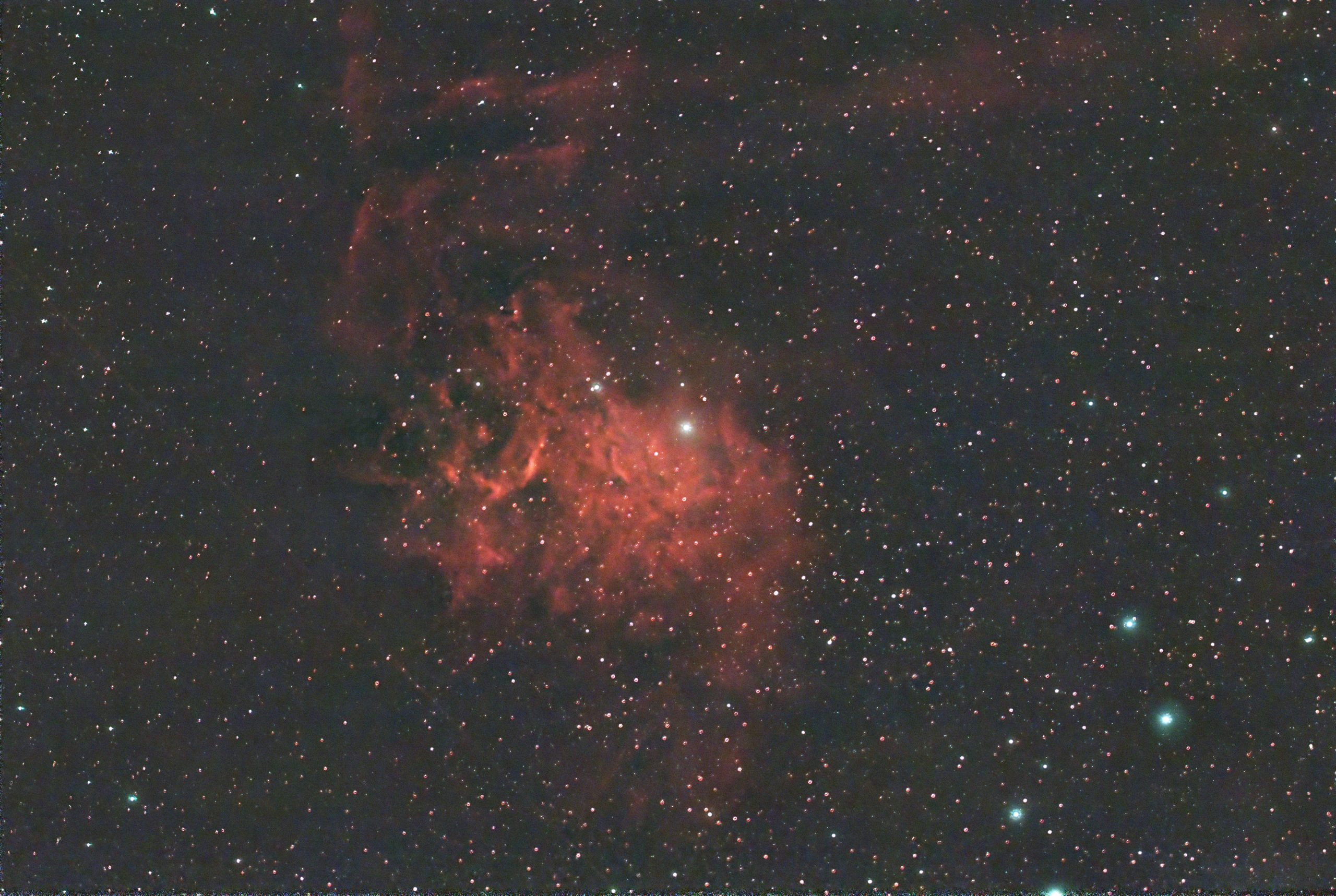IC 405: The Flaming Star Nebula – A Dazzling Dance of Dust and Gas

Welcome, cosmic wanderers, to another journey through the marvels of our Universe! Today we’ll be exploring IC 405, better known as the Flaming Star Nebula, an awe-inspiring testament to the beauty and complexity of the cosmos. Join me as we venture into the depths of space to uncover the secrets of this celestial gem.
A Fiery Embrace: Located approximately 1,500 light-years away in the constellation Auriga, the Flaming Star Nebula is a stunning combination of emission and reflection nebulae. Spanning an area of around 30 light-years, its vivid colours and intricate patterns make it a popular target for astrophotographers and astronomers alike.
The heart of IC 405 is the bright, blue variable star AE Aurigae, which is believed to have originated from the Orion Nebula around 2.5 million years ago. Propelled by a violent encounter with other massive stars, AE Aurigae now finds itself illuminating the Flaming Star Nebula, casting its intense light on the surrounding clouds of gas and dust.
The Dance of Dust and Gas: The Flaming Star Nebula’s striking appearance can be attributed to the interplay between its emission and reflection components. The red and pink hues in the nebula result from ionized hydrogen gas, energized by AE Aurigae’s ultraviolet radiation. This process, called emission, causes the hydrogen atoms to emit light at specific wavelengths, giving rise to the nebula’s fiery glow.
In contrast, the striking blue regions of IC 405 are caused by the reflection of starlight off the surrounding dust particles. The scattered light retains the original colour of the star, resulting in the blue-tinted areas that provide a stunning backdrop for the Flaming Star Nebula’s vibrant palette.
A Nursery for Stars: Much like other nebulae, IC 405 serves as a stellar nursery, a place where new stars are born from the rich clouds of gas and dust. Within its swirling tendrils, new stars gradually coalesce, their mass growing as they attract more and more material. Once a critical mass is reached, nuclear fusion ignites at the core of the protostar, giving birth to a new star that will eventually join the cosmic dance.
Cosmic Connections: IC 405’s tumultuous past is a testament to the ever-changing nature of our Universe. Its central star, AE Aurigae, bears witness to the powerful forces at play in the cosmos, having travelled great distances from its birthplace in the Orion Nebula. As we gaze upon the Flaming Star Nebula, we are reminded of the intricate web that connects all celestial objects, from the smallest dust particles to the mightiest stars.
Conclusion: The Flaming Star Nebula, with its fiery hues and dynamic composition, is a captivating example of the beauty and complexity that the Universe has to offer. As we continue to explore the cosmos, we are constantly reminded of the awe-inspiring phenomena that await us, each a testament to the unfathomable power and majesty of the cosmic dance. So, dear stargazers, until our next journey through the wonders of the cosmos, keep your eyes on the skies and let the celestial spectacle fill you with wonder.
